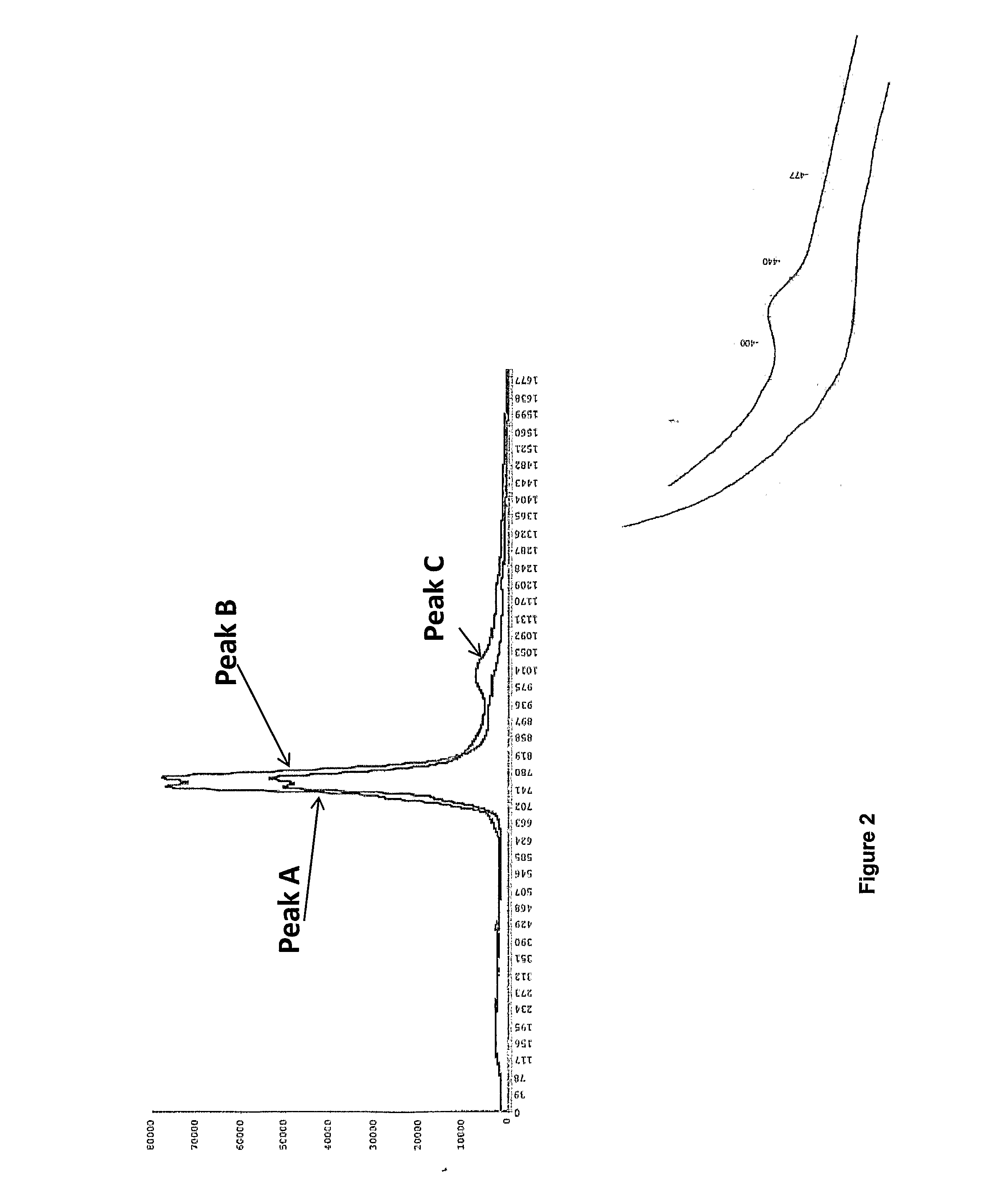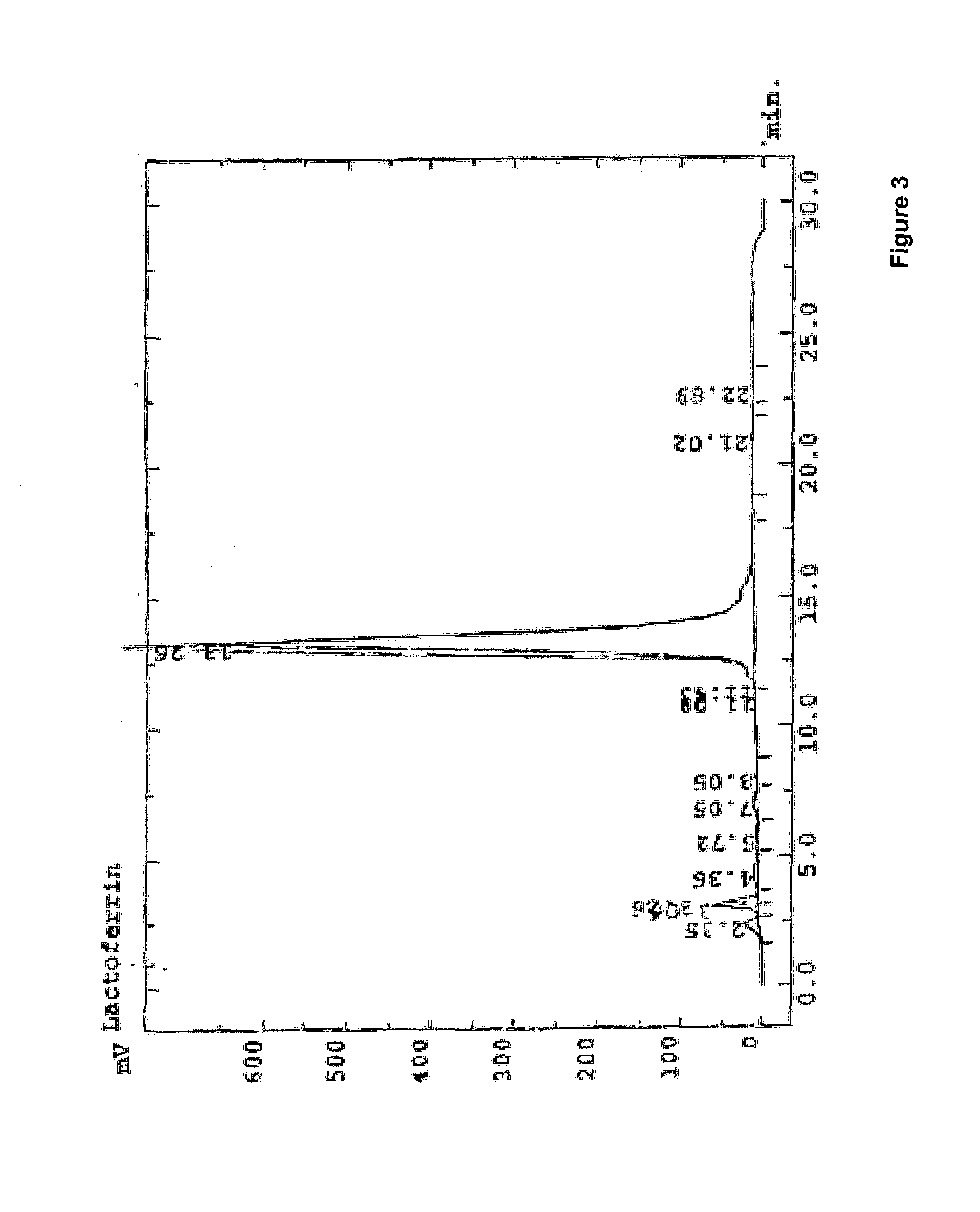Method for production of lactoferrin
a technology of lactoferrin and lactoferrin, which is applied in the direction of specific peptides, antibacterial agents, peptides/protein ingredients, etc., can solve the problems of contaminant enzymes, no process, no other existing process for commercial-scale purification of lactoferrin, and no process can remove contaminants affecting the stability and activity of lactoferrin, so as to avoid the destruction of glycan chains and appearance
- Summary
- Abstract
- Description
- Claims
- Application Information
AI Technical Summary
Benefits of technology
Problems solved by technology
Method used
Image
Examples
example
Raw Materials
[0146]As it was explained, to avoid the denaturation of the lactoferrin and / or the destroying of its glycan chains and / or the appearance of Lf polymers by heat treatment, it is important to extract Lf from unpasteurized raw material such as skim milk before the pasteurization or free-caseinate milk, or cheese-whey or skim colostrums.
[0147]First of all, the raw material is collected at maximum 10° C. in the farms having received a control safety number from the AFSCA (Federal Agency of the Security of the Food Chain). The raw material
[0148]The raw material is skimmed at 50° C. and does not need to be microfiltrated before to extract the LN containing Lf. Nevertheless, some milk cooperatives prefer to microfiltrate the raw material on 1.4μ ceramic membranes which constitute for them a replacement of the pasteurization.
Extraction of the Lactoferrin
[0149]The extraction column chromatography of which the active part which has a volume of 12 m3 contains 2.000 liters (fluidize...
PUM
| Property | Measurement | Unit |
|---|---|---|
| temperature | aaaaa | aaaaa |
| isoelectric pH | aaaaa | aaaaa |
| molecular weight | aaaaa | aaaaa |
Abstract
Description
Claims
Application Information
 Login to View More
Login to View More - R&D
- Intellectual Property
- Life Sciences
- Materials
- Tech Scout
- Unparalleled Data Quality
- Higher Quality Content
- 60% Fewer Hallucinations
Browse by: Latest US Patents, China's latest patents, Technical Efficacy Thesaurus, Application Domain, Technology Topic, Popular Technical Reports.
© 2025 PatSnap. All rights reserved.Legal|Privacy policy|Modern Slavery Act Transparency Statement|Sitemap|About US| Contact US: help@patsnap.com



